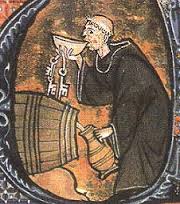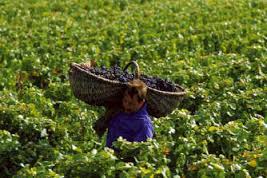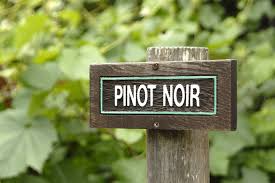Pinot Noir: a little (and I mean little) history and information about the grape and then more about our adventures in the wine areas we loved so much. So join us on a Pinot Noir journey to find out more about this wine. It is the 10th most planted grape in the world.
Pinot Noir is a red wine grape variety of the species Vitis viniferais. It is so named because the bunches or grapes looks like a pine cone or “pinot” in French. Noir is defined as black in French so the grapes are grouped in pine cone like bunches and with very dark (noir) skinned grapes. There are about 16 unique, different types of pinot noir grapes that exists throughout the world. Historically, it dates back to the Romans who brought the grape with them to Gaul (now France).

Pinot Noir is probably 1000 years older than Cabernet Sauvignon (we certainly didn’t know that)
In the Middle Ages, Benedictine and Cistercian monks began keeping vineyard records. They also probably started the concept of terroir when they realized there were differences in the same wines in different areas. They built stone wales and that kicked off the various appellations that exist today in modern France.

Pinot is a challenging grape to grow because it is quite finicky and requires a cool climate. The grapes are very susceptible to weather conditions, pruning techniques, wind, frost, and soil. I have read that it takes a low yield to produce a quality wine. It has a thin skin so it is susceptible to various fungal diseases.
It is known as the Burgundian grape but it is grown in wine regions throughout the world. France still grows the most pinot noir in the world. While the grape remains the same, the particular place it is grown whether it is Germany, Italy, South Africa, Australia, New Zealand, Oregon, and/or especially the different California regions, the wines can go from a lush mouthfeel to a weaker, but are still characteristically tasty due to the soil and climate (terroir).

Even within Burgundy, there is subtle but consistent mouth feel differences depending where it is grown. All of the other regions growing the pinot noir grapes also express different interpretations of the pinot noir grape. It turns out that Pinot Noir is one of a family of Pinot grapes. Pinots include: Pinot Noir (black), Pinot Gris (gray) and think Oregon, and Pinot Blanc (white) and Pinot Meunier. All of them are named for the relative color of their skins. – all so-named because of the relative colors of their skins. Pinot Meunier, along with Pinot Noir is used in the production of Champagne and other sparkling grapes.
Today, there is more than 290,000 acres of Pinot Noir grown in the world.
When all is said and done, Pinot Noir is a fruit forward wine (cherry, strawberry, or raspberry notes) that can show additional herbal, floral, woody, and leather notes depending upon where it is grown. Interestingly, Pinot Noir is commonly used in sparkling wines and champagnes (blanc de noirs) as well as blended with other grapes which is commonly done in France.
The North American winemakers just started making Pinot Noir in earnest 25 years ago. It started in the 1970’s, there was only a handful of Pinot Noir winemakers. In the late 1980s and early 1990s, there was some promising wine made by some of the pinot pioneers that included Duckhorn, Caymus, Cakebread, Pine Ridge, Patz and Hall, and Williams Selyem. in Napa. Pinot Noir also found a home in the Santa Barbara area with Ken Brown who is one of the pinot pioneers as the founding winemaker for Byron (that was sold to Mondavi) and Zaca Masa. He started his own label that is one of our favorites. From the late 1990’s forward, the amount of Pinot Noir grown grew exponentially in the United States. As the Pinot Noir experience grew in the US, it started growing in other regions in the world as well. Follow us as we take on some of our favorite California Pinot Noir places.

